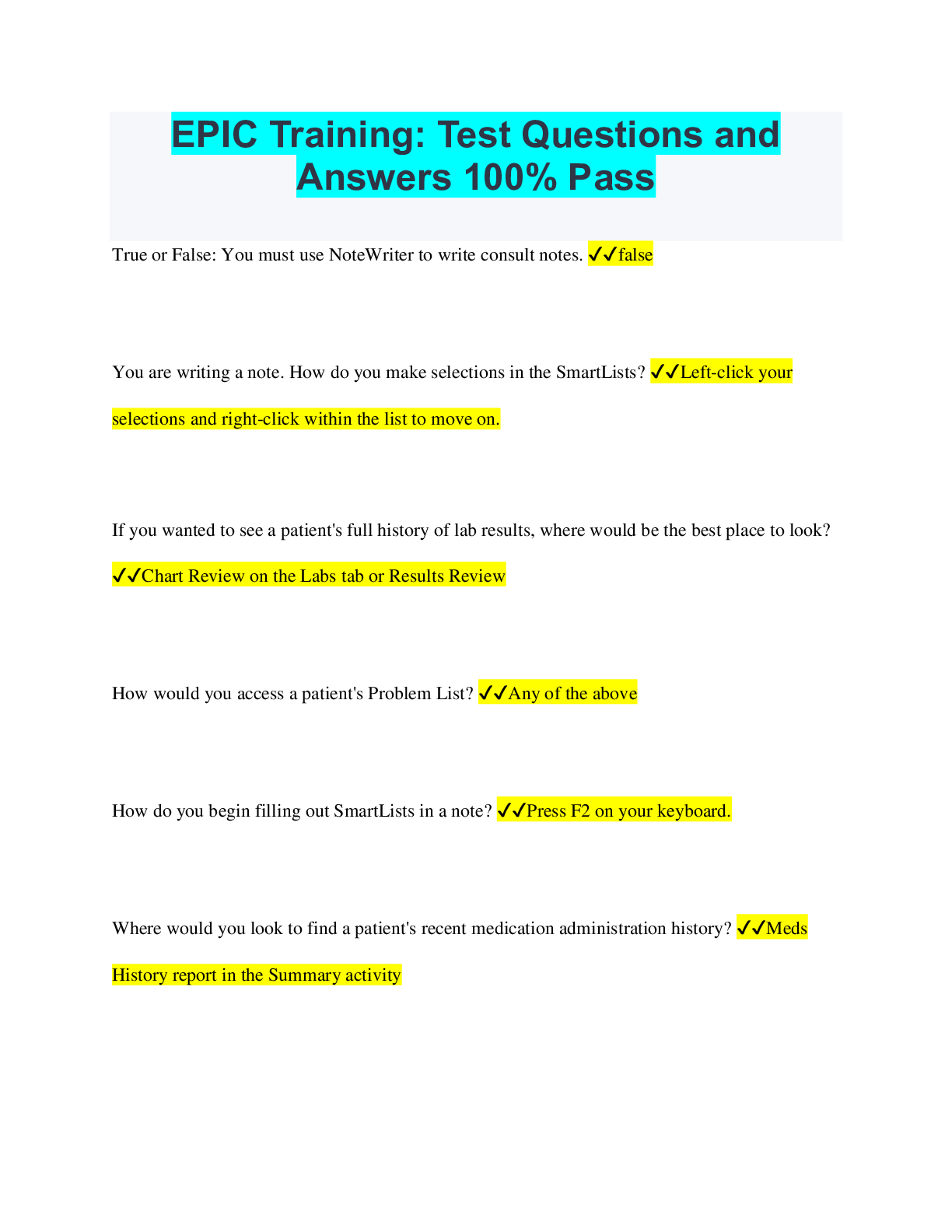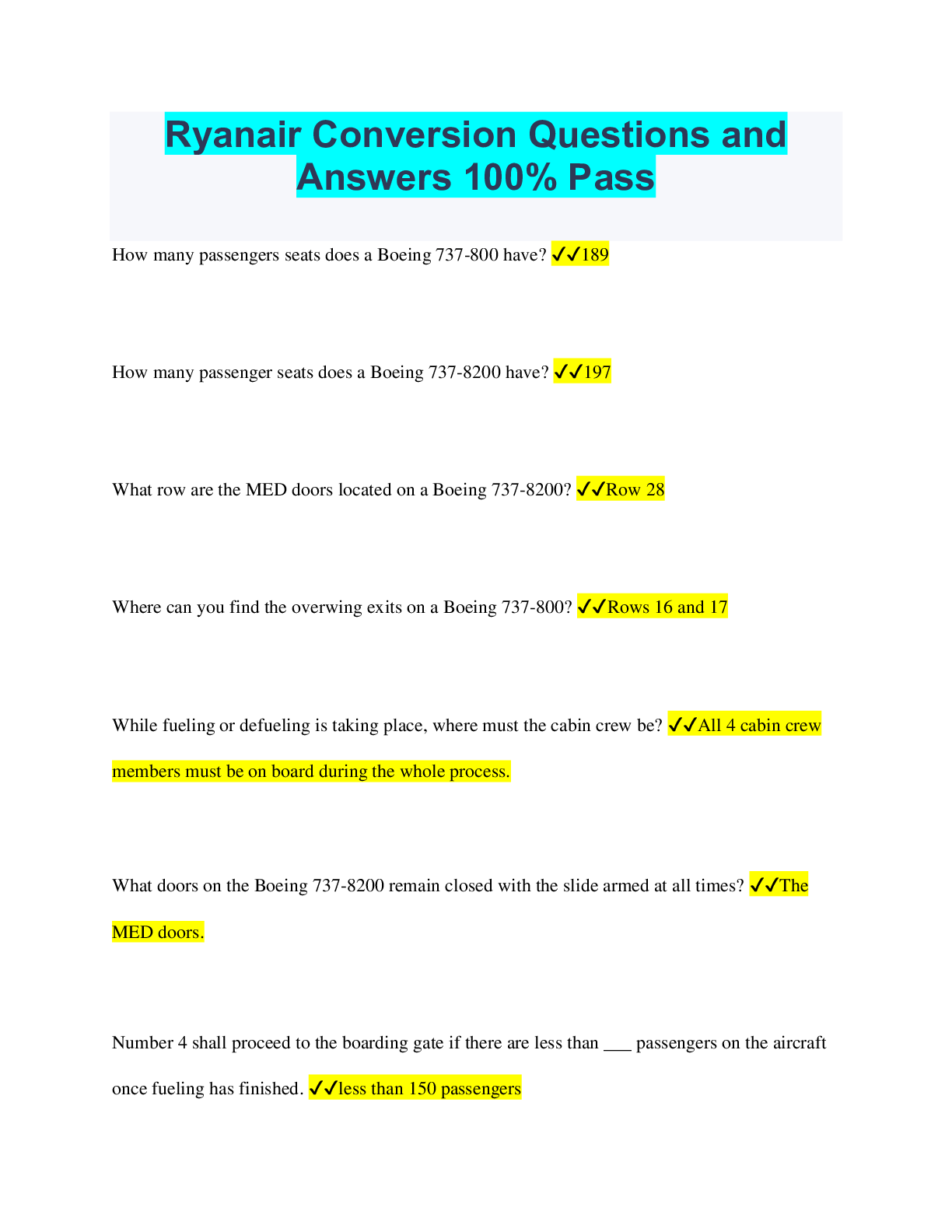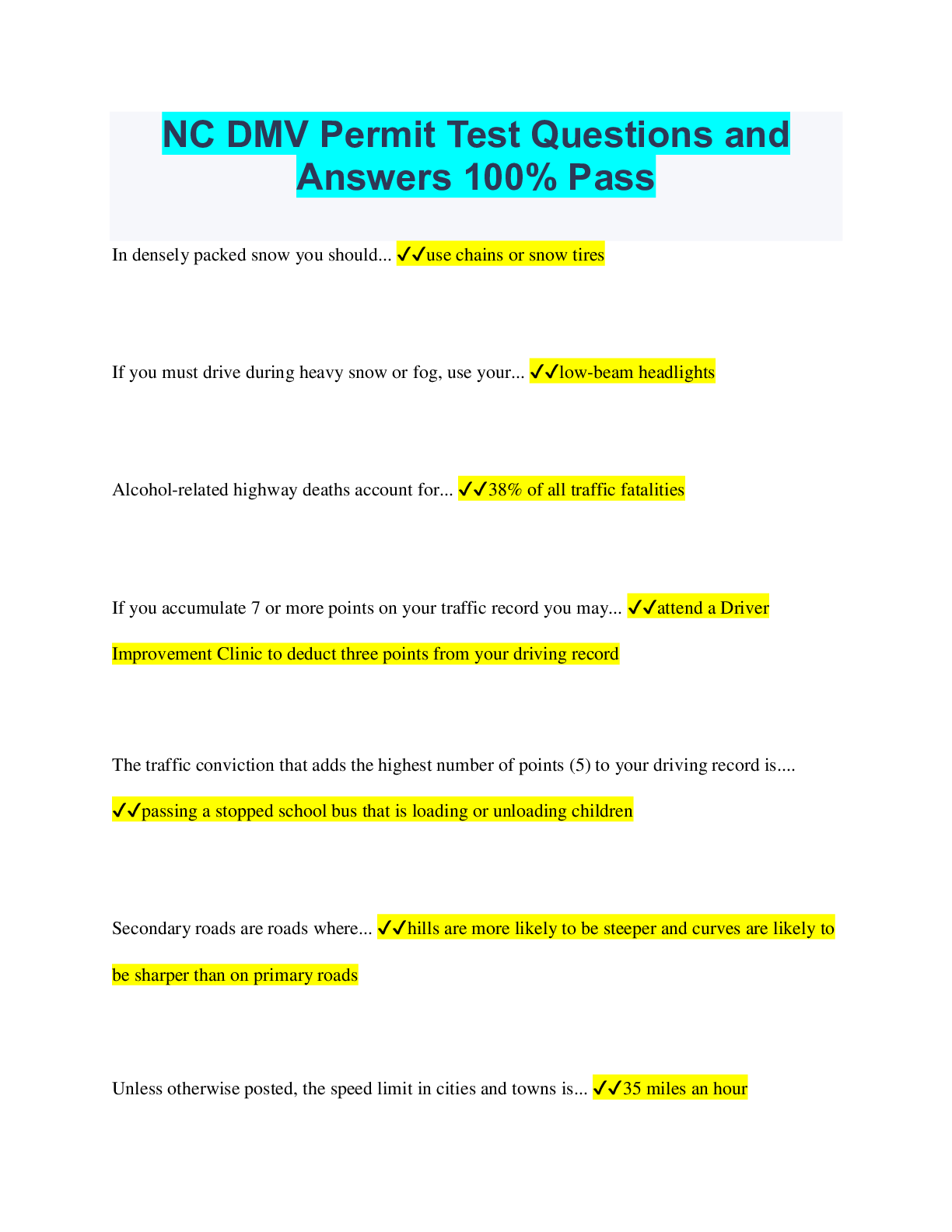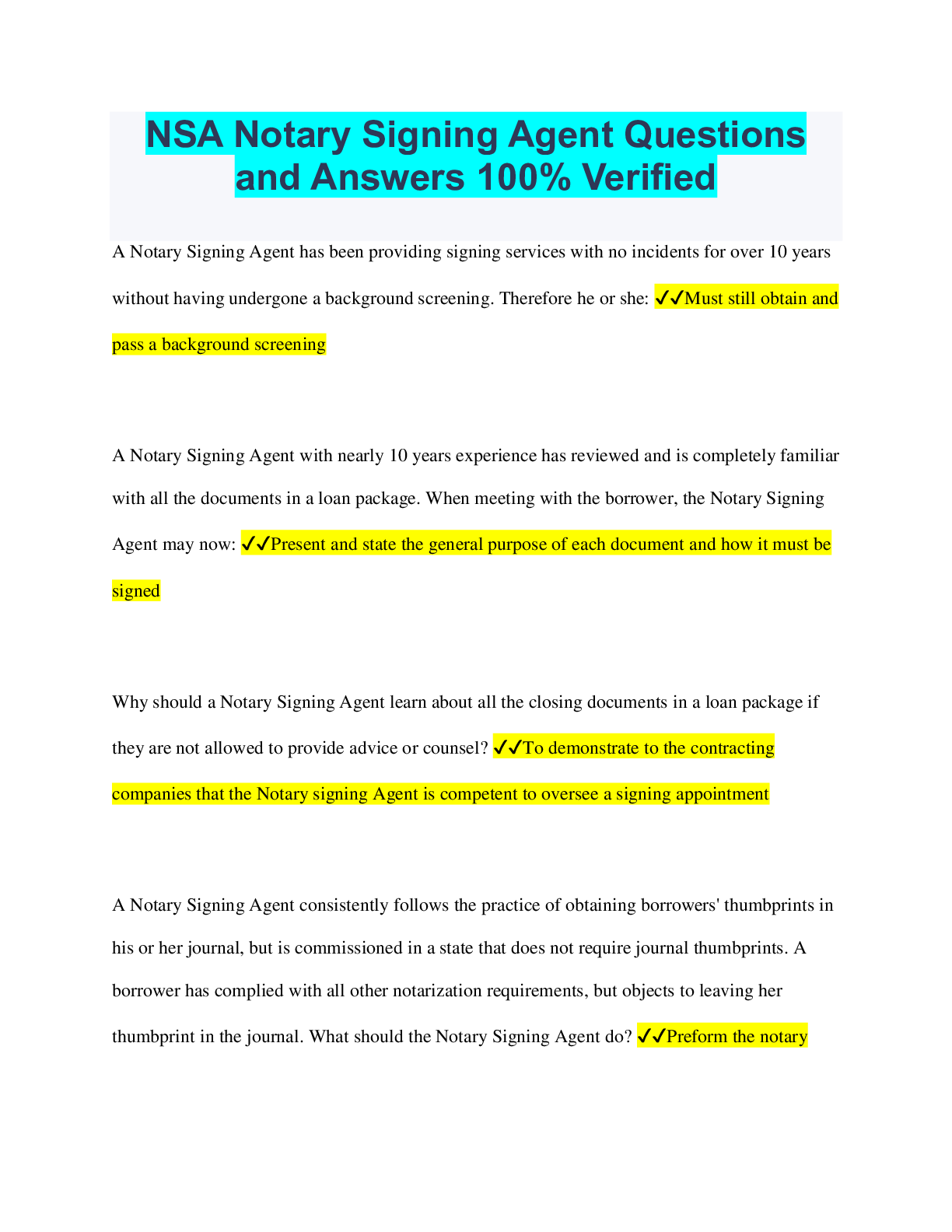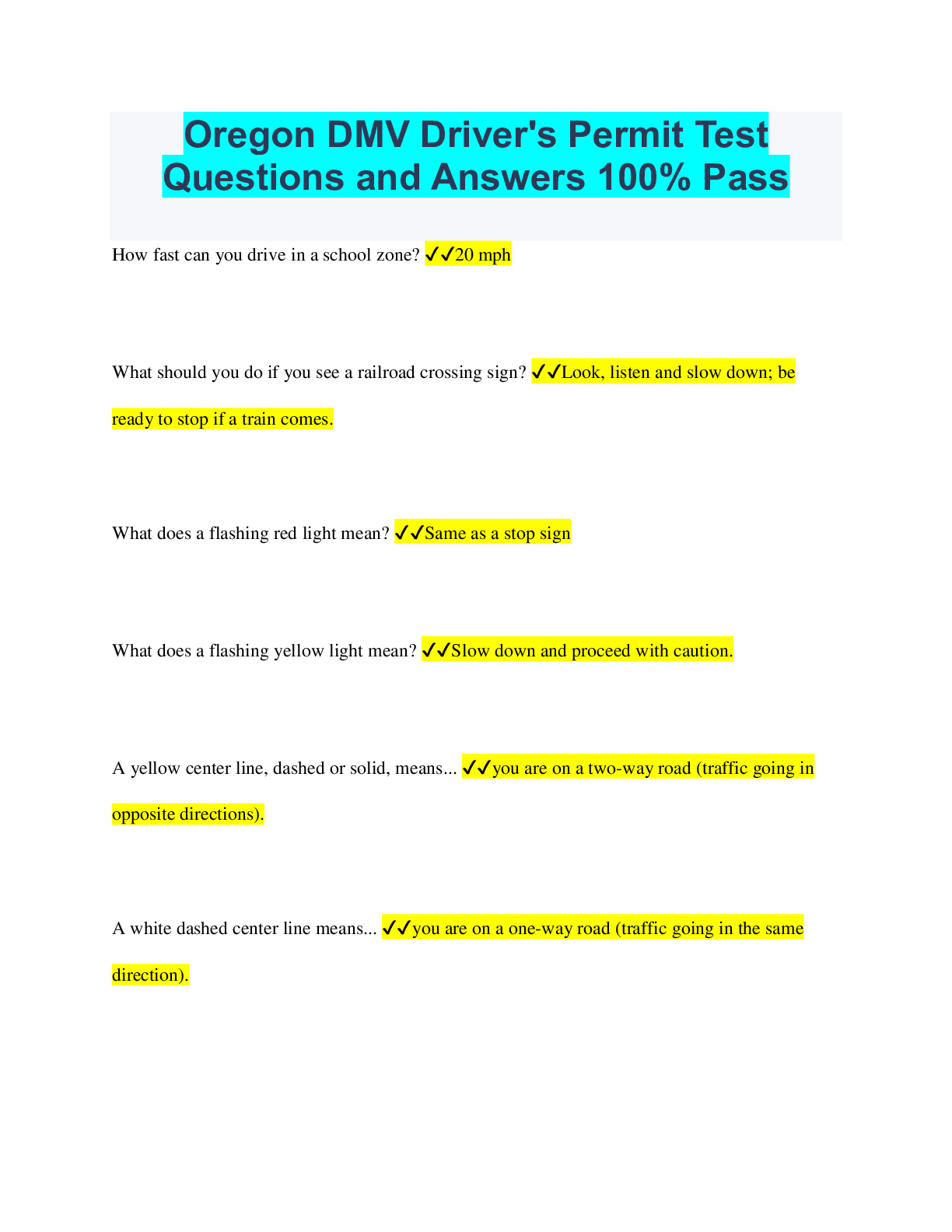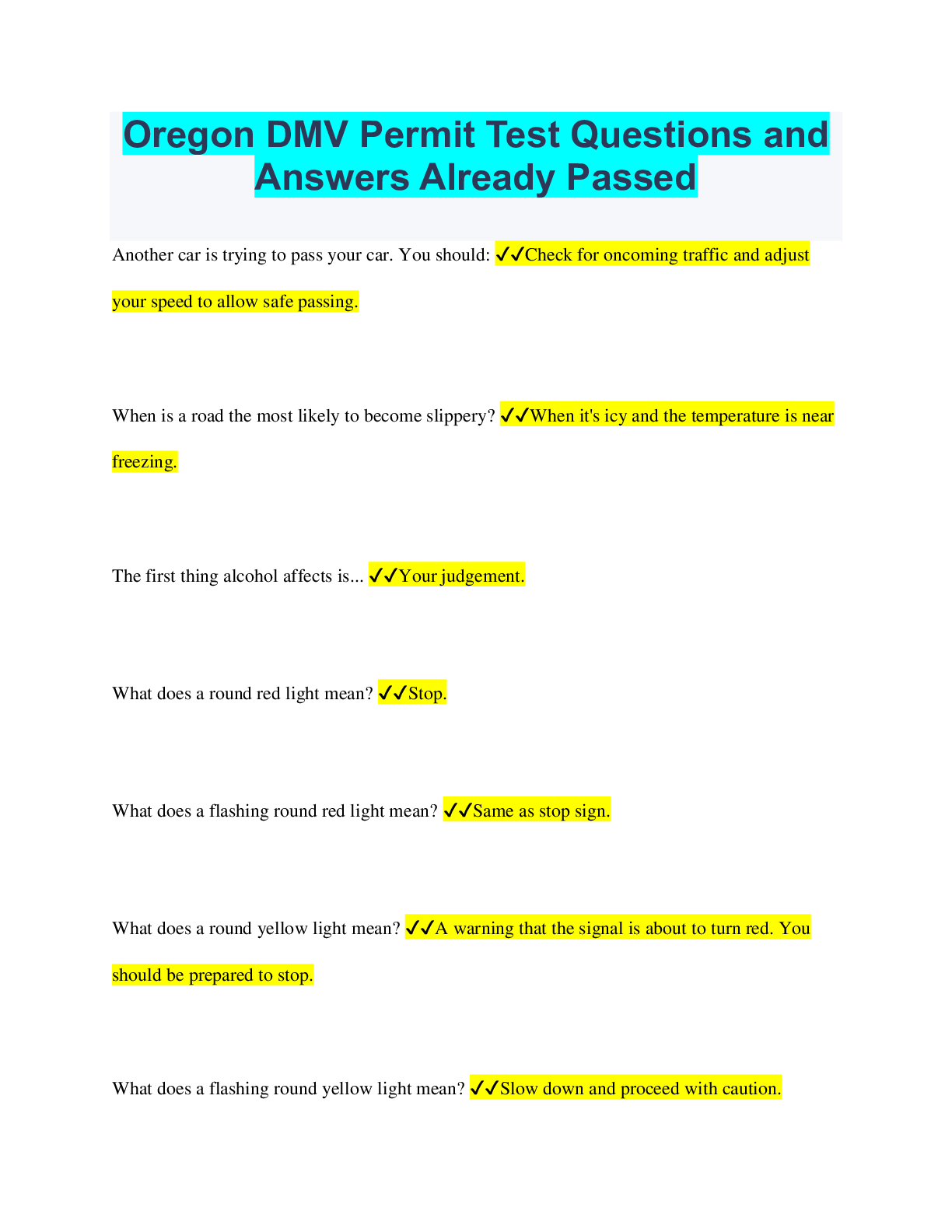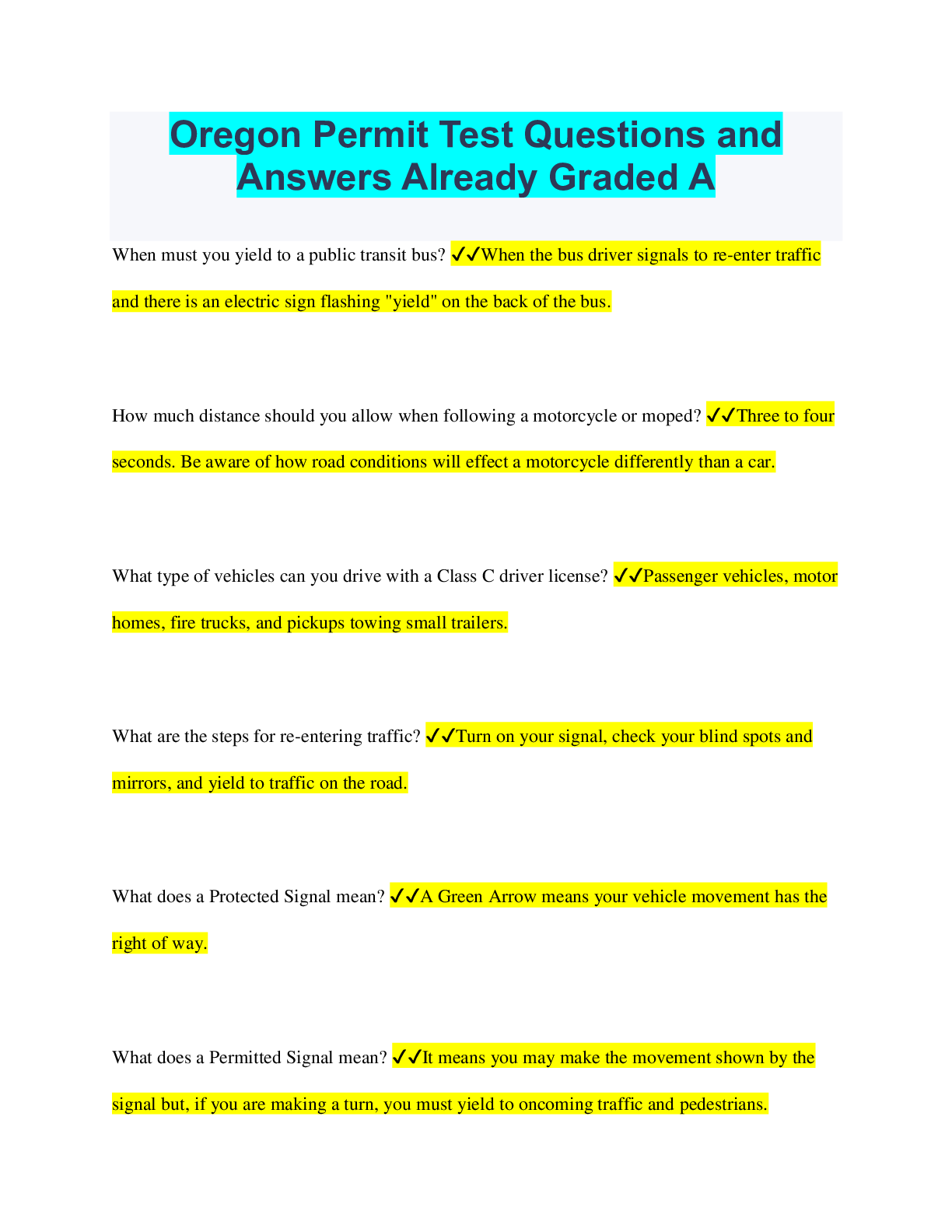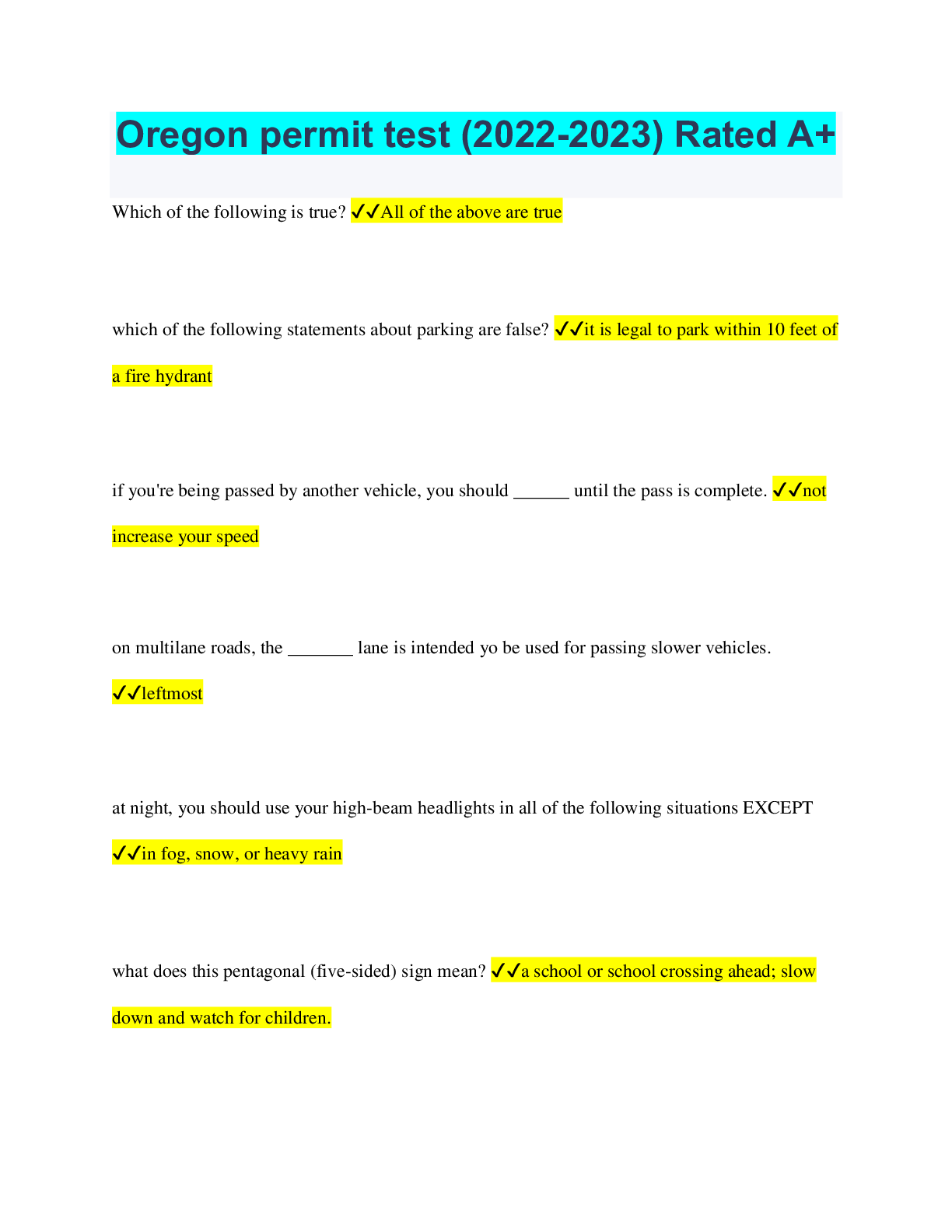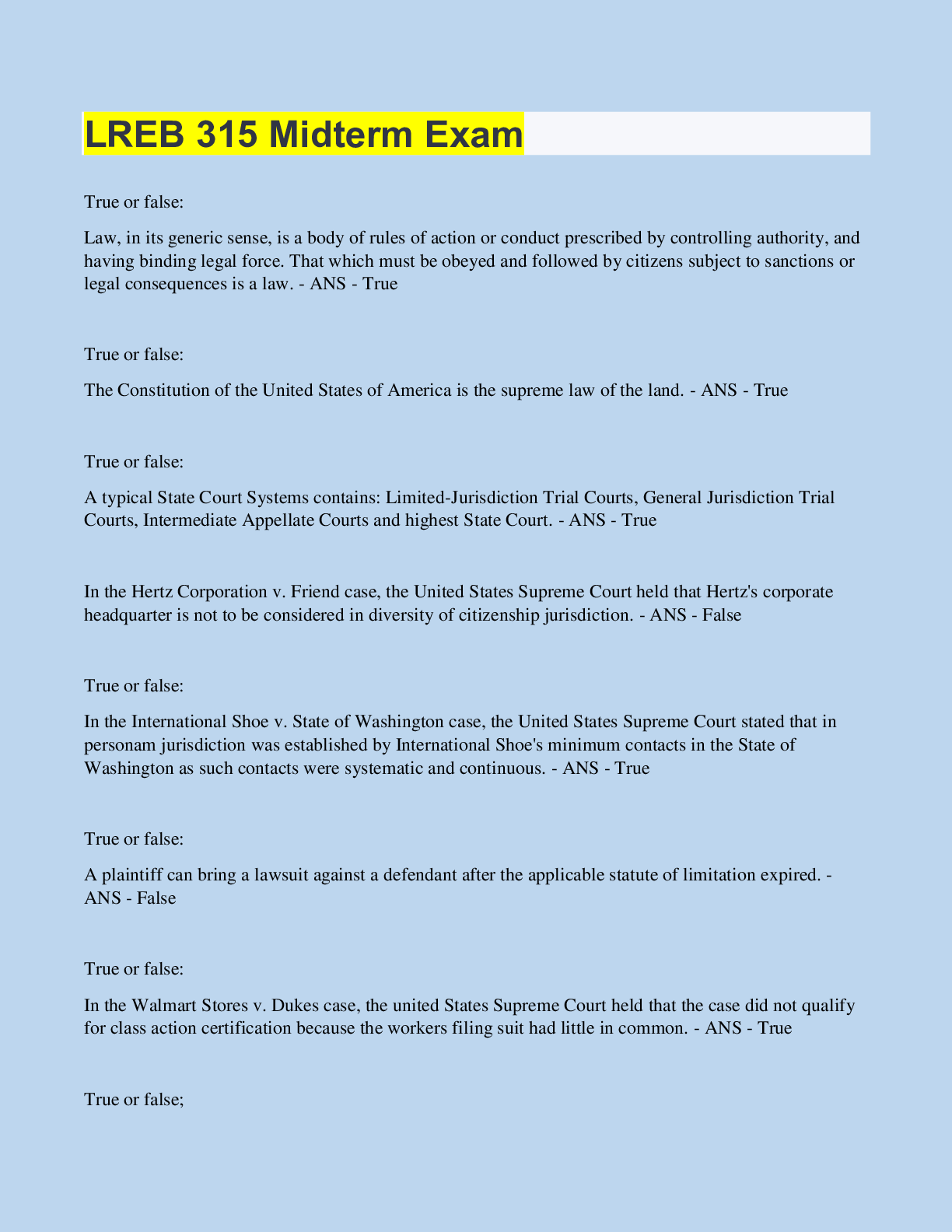Education > QUESTIONS & ANSWERS > RVE Practice Questions and Answers Rated A (All)
RVE Practice Questions and Answers Rated A
Document Content and Description Below
RVE Practice Questions and Answers Rated A Criterion-Referenced Tests ✔✔Measures children's reading achievement against criteria or guidelines set for all test takers. CTPIII ✔✔Measures ve... rbal and quantitative ability in grades 3-12. Degrees of Reading Power (DRP) ✔✔Assess how well children understand the meaning of written text in real life situations. Norm-Referenced Test ✔✔Assesses children's reading ability by comparing scores against other children. Validity ✔✔How well a test measures what it is supposed to measure. Reliability ✔✔Consistency of a test. Bias ✔✔Occurs in education when information is not available for some students in order to successfully pass a test. Running Record ✔✔An assessment which measures a child' fluency during oral reading. Literacy Profiles ✔✔Includes work samples, records of independent reading and writing, checklists, surveys, and self-evaluation forms. Rubrics ✔✔Holistic scoring method used to assess a student's ability. Miscue Analysis ✔✔The process of assessing strategies students use in their reading - teacher records additions, omissions, alterations while student reads. Informal Reading Inventories (IRI) ✔✔Series of samples of texts prearranged in stages of increasing difficulty. Pinpoint skill level and the additional concepts they need to work on. Assessment ✔✔The practice of collecting information about student progress in order to determine how well they are achieving particular goals. Effective Assessment Characteristics ✔✔It should be an ongoing process, is integrated into ongoing instruction, reflects a student's actual reading and writing experience, and is a collaborative and reflective process. Reading Conferences ✔✔A meeting where the teacher asks a student to read a section and then tell why they chose that section. Reading Surveys ✔✔A list of questions teachers use to find out what students are reading, why they chose a particular book, and how they fell about the book. Daily Reading Time ✔✔A set time in which students and teachers engage in reading independently or in small groups. Literature Circles ✔✔Students come together to discuss and respond to a book that they are reading at the same time. Students use their experiences to create meaning, make connections, and have lively discussions about the book. Readers' Theater ✔✔A reading activity used to emphasize reading fluency. A story is modified so that various characters have to read portions of the text. Students rehearse their reading part and then create a theater format to present the reading. Leveled Books ✔✔Books that have been sorted according to level of difficulty so that children and teachers can select books at the child's appropriate reading level. Just Right Books ✔✔Leveled books children can read on their own. Independent Reading Level ✔✔The reading level at which a student is able to read totally on their own with 95%-!00% accuracy. Instructional Reading Level ✔✔The level of reading material that a student can read with the teacher support and instruction with 95-97% accuracy. Frustrational Reading Level ✔✔The level of reading material that a student can read at less than an 85% accuracy in word recognition and less than a 75% accuracy in comprehension. Frustration level text is difficult text for the reader and require extensive reading support. Phonemic Awareness ✔✔The understanding that the sounds in spoken language work together to make words. Phonics ✔✔The understanding that letters represent sounds in written language. Phonological Awareness ✔✔an awareness of an the ability to manipulate the sounds of spoken words; it is a broad term that includes recognizing and making rhymes, recognizing alliteration, identifying and working with syllables in spoken words, identifying and working with onsets and rhymes in spoken syllables. Student-Adult Reading ✔✔A student reads on-on-one with a teacher in which the teacher reads the text first and the student reads the text or passage. This allows the teacher to model fluent reading. Choral Reading/Shared Reading ✔✔Students read aloud as a group with the teacher. Taped-assisted Reading ✔✔Known as books on tape. Students can listen to the text of a book while following along as they point to each word in their book. Partner Reading ✔✔Students pair up and take turns reading aloud to each other. Systematic Instruction ✔✔Instructional plan that has a selected set of letter-sound relationships that are organized into a logical scope and sequence. Explicit Instruction ✔✔Any phonics program that gives teachers precise directions for teaching. Synthetic Phonics ✔✔Children learn how to convert letters or letter combinations in to sounds, and then how to blend sounds together to form recognizable words. Analytic Phonics ✔✔Students learn to analyze letter-sound relationships in previously learned words. They do not pronounce sounds in isolation. Analogy-based Phonics ✔✔Students use word families to identify unfamiliar words. Phonics through Spelling ✔✔Student [Show More]
Last updated: 2 years ago
Preview 1 out of 4 pages
.png)
Buy this document to get the full access instantly
Instant Download Access after purchase
Buy NowInstant download
We Accept:

Reviews( 0 )
$7.00
Can't find what you want? Try our AI powered Search
Document information
Connected school, study & course
About the document
Uploaded On
Sep 09, 2022
Number of pages
4
Written in
Additional information
This document has been written for:
Uploaded
Sep 09, 2022
Downloads
0
Views
118
.png)

.png)


